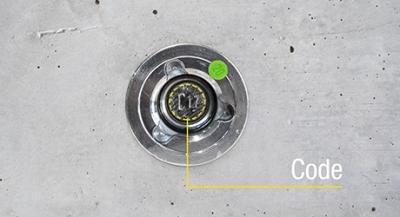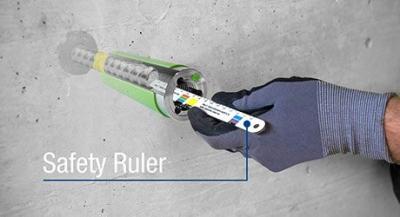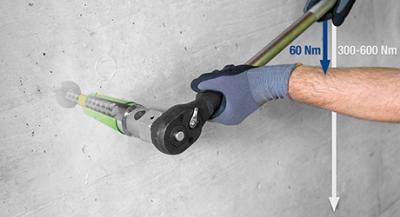Doka suspension points
the innovative, safe connectors in the build phase for climbing and dam formwork and for working and protection platforms

Suspension points are essential for every climbing and dam formwork system and for every working and protection platform. Only a correctly made suspension point is a safe suspension point, because it has to transfer the horizontal and vertical loads reliably to the structure.
Find out how easy it is to meet these requirements on jobsites with the new-generation suspension points.
Preparing the suspension point
Every project is different – the ideal combination of climbing cone and stop anchor always has to be selected to suit the loads to be transferred and the wall thickness of the structure.
Correct installation is vital for every fit-for-purpose suspension point. Supplementing the User Information booklet, short instructions explain to the workers on the site exactly how to do the job correctly every time. Hang up the big weatherproof poster close to the action so that the crucial information is available right where it is needed.
2-phase post-pour safety check
Trust is good and control a whole lot better. Doka uses coding with the new-generation stop anchors, so even after the concrete has been poured it is easy to verify which type of stop anchor is in place.
The as-built status of each suspension point can be checked against the specs and, if necessary, documented.


Better safe than sorry. The Doka Safety Ruler was developed to go with the new generation of stop anchors. It is perfect for double-checking the permissible placement depth of the stop anchor before the load is imposed on the suspension point. All this ensures that the maximum tensile forces can be reliably transferred in full to the structure.
Safe and effortless removal of the reusable climbing cones
When the climbing system moves on, the climbing cones are removed for re-use. The improved sealing sleeve between concrete and climbing cone minimises the force needed to remove the climbing cone. The effort required is 5 to 10 times less than the force needed to remove the climbing cone from a suspension point without sealing sleeve. The sealing sleeve also prevents the stop anchor from working loose in the climbing cone during pouring. That makes for safe progress and less fatigue in the individual work phases.

